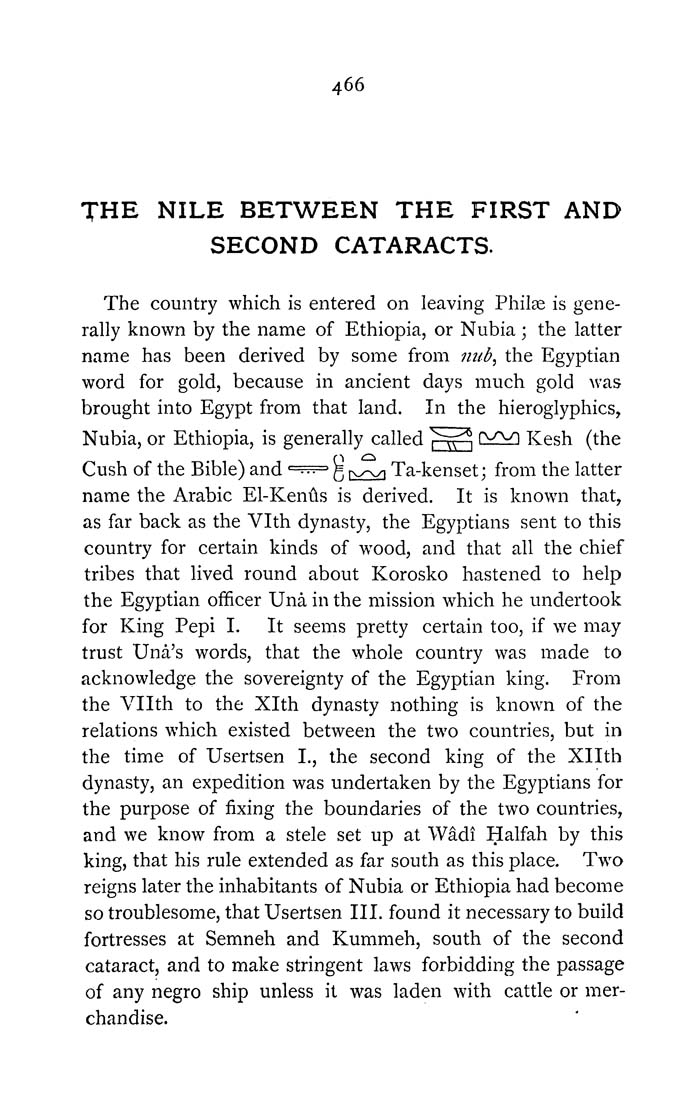466
THE NILE BETWEEN THE FIRST AND
SECOND CATARACTS.
The country which is entered on leaving Philae is gene¬
rally known by the name of Ethiopia, or Nubia; the latter
name has been derived by some from nub, the Egyptian
word for gold, because in ancient days much gold was
brought into Egypt from that land. In the hieroglyphics,
Nubia, or Ethiopia, is generally called ^^^=^ f^-^^ Kesh (the
Cush of the Bible) and ^=^^^ ^ r^^^^ Ta-kenset; from the latter
name the Arabic El-Kent^s is derived. It is known that,
as far back as the Vlth dynasty, the Egyptians sent to this
country for certain kinds of wood, and that all the chief
tribes that lived round about Korosko hastened to help
the Egyptian ofhcer Una in the mission which he undertook
for King Pepi I. It seems pretty certain too, if we may
trust Una's words, that the whole country was made to
acknowledge the sovereignty of the Egyptian king. From
the Vllth to the Xlth dynasty nothing is known of the
relations which existed between the two countries, but in
the time of Usertsen L, the second king of the Xllth
dynasty, an expedition was undertaken by the Egyptians for
the purpose of fixing the boundaries of the two countries,
and we know from a stele set up at Wadi Halfah by this
king, that his rule extended as far south as this place. Two
reigns later the inhabitants of Nubia or Ethiopia had become
so troublesome, that Usertsen III. found it necessary to build
fortresses at Semneh and Kummeh, south of the second
cataract, and to make stringent laws forbidding the passage
of any negro ship unless it was laden with cattle or mer¬
chandise.
|








